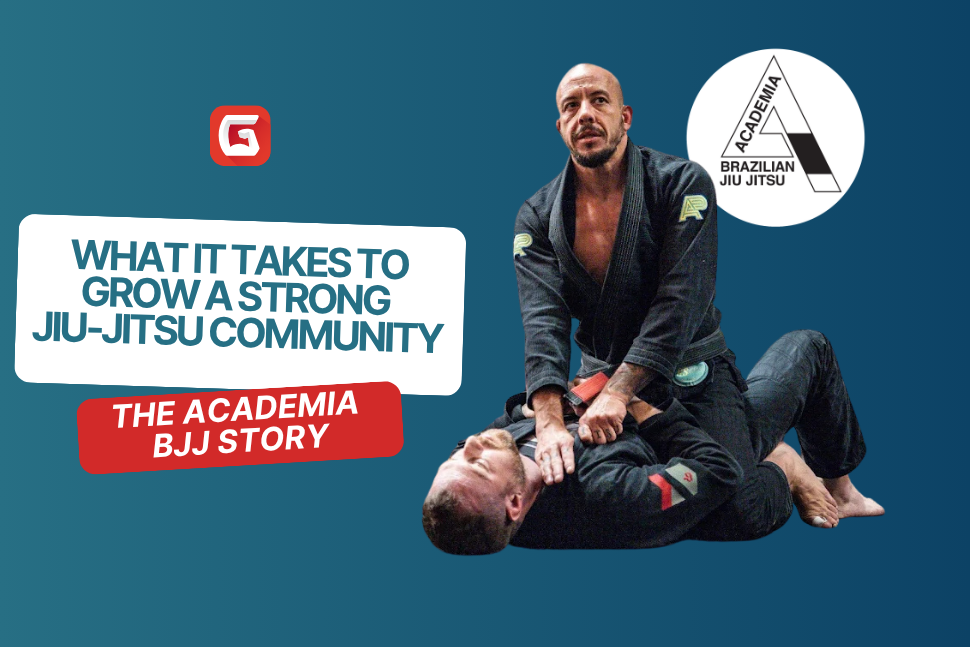5 Marketing Channels to Build a Fitness Empire w/ Matt Kafora

Our hero today is Matt Kofora, a serial entrepreneur and fitness industry veteran. Matt started as a trainer, moved into gym ownership and now runs a chain of orange theory gyms. He's created success on every side of the fitness business. So he knows what to do, but perhaps more importantly, what not to do.
Today, Matt unpacks the marketing systems that reliably build fitness business empires. Specifically, how any gym of any size can leverage referrals and event marketing. Overall, Matt believes that ideally, you are engaging in five marketing channels at any given time and explains the most important ones for growing his collection of gyms.
Once you've got the attention of prospective members, Matt walks you through how to sell your programs and get new members to sign the dotted line. We explore the differences between marketing and selling as an independent gym and a franchise gym concept as well as the pros and cons that come with each of those.
For Gym Franchisees
Matt Kafora’s guidance is particularly relevant for franchisees who must navigate the balance between adhering to franchise branding and marketing requirements and making localized decisions to attract and retain members. Here’s a breakdown of his advice:
Understand the Franchise’s Marketing Framework
Kafora emphasizes the importance of fully understanding the franchise's existing marketing framework and resources. This includes brand guidelines, pre-approved marketing materials, and national or regional advertising efforts. By leveraging these resources efficiently, a franchisee can benefit from the franchise's established brand while ensuring consistency across all marketing efforts.
Localize Marketing Efforts
While it's crucial to adhere to the franchise's overarching marketing strategies, Kafora advises franchisees to also focus on local marketing efforts. This means tailoring marketing messages to the local community, engaging with local events, and addressing the specific needs and interests of the local market. Personalizing your gym's presence to fit the local culture and demographic can differentiate your gym from competitors, including other franchise locations.
Utilize Digital Marketing to Your Advantage
Digital marketing is a powerful tool for franchisees, according to Kafora. This includes leveraging social media platforms to create a community around your gym, using targeted ads to reach potential members in your area, and optimizing your local website or page for search engines. Kafora suggests creating content that resonates with your local audience, such as highlighting member success stories, sharing fitness tips tailored to local interests, and promoting local events.
Foster Community Engagement
Building a strong community both inside and outside the gym is key to retaining members and attracting new ones. Kafora recommends hosting events, workshops, and fitness challenges that encourage participation and foster a sense of belonging among members. Engaging with the community through sponsorships, partnerships with local businesses, and participation in local events can also raise your gym's profile and attract new members.
Invest in a Referral Program
A referral program can be particularly effective for franchise gyms, as it leverages the existing member base to attract new members. Kafora advises creating an enticing referral program that rewards both the referrer and the new member, making it a win-win for both parties. This approach not only helps in acquiring new members but also in retaining current ones by making them feel valued and involved in the gym's growth.
For Independent Gyms
Matt Kafora's advice for marketing a non-franchise gym as an independent gym owner focuses on leveraging the unique position of independence to create a strong, distinctive brand and community connection that stands out in the fitness industry. Here's a breakdown of his key strategies:
Develop a Unique Brand Identity
Kafora stresses the importance of establishing a clear and unique brand identity for your gym. This involves creating a compelling brand story, values, and visuals that resonate with your target audience. Your brand should reflect the unique aspects of your gym, such as specialized training programs, community involvement, or a particular fitness philosophy, to differentiate from competitors, including franchise operations.
Personalize Member Experiences
Without the constraints of a franchise system, independent gym owners have the freedom to offer highly personalized experiences to their members. Kafora advises tailoring fitness programs, services, and communication to meet individual member needs and preferences. Personalization can foster a deeper connection between members and your gym, enhancing member satisfaction and loyalty.
Engage with the Local Community
Kafora highlights the significance of building strong ties with the local community. This can be achieved through hosting and participating in local events, establishing partnerships with local businesses, and supporting local causes. Engaging with your community not only raises your gym's profile but also positions your gym as a valuable community member, attracting new members through positive word-of-mouth.
Utilize Digital Marketing Strategically
In today’s digital age, having a robust online presence is crucial. Kafora recommends utilizing social media, email marketing, and a user-friendly website to connect with both current and prospective members. Content should be engaging and relevant, showcasing your gym's culture, success stories, and the value you provide to members.
Also Implement a Referral Program
Referral programs are particularly effective for independent gyms, according to Kafora. By incentivizing members to refer friends and family, you can leverage the trust and satisfaction of your current members to attract new ones. This strategy not only helps in growing your membership base but also in creating a community of loyal members.
Innovate and Adapt
Finally, Kafora encourages independent gym owners to continuously innovate and adapt to changing market trends and member needs. This could involve introducing new fitness programs, adopting new technology, or reevaluating your marketing strategies. The flexibility of being an independent owner allows for quick adaptation and innovation, keeping your gym competitive and relevant.
Conclusion
Matt Kafora's holistic marketing approach enables gym owners to navigate the complexities of the fitness industry landscape effectively. It's about creating a marketing ecosystem that not only reaches wide and far but also deepens connections with each member, turning them into advocates for the brand.
For more information on Matt Kafora and his innovative marketing strategies, professionals in the fitness industry are encouraged to connect with him directly through his LinkedIn profile or attend his workshops through LoudRumor.
Gym management software that frees up your time and helps you grow.
Simplified billing, enrollment, student management, and marketing features that help you grow your gym or martial arts school.





